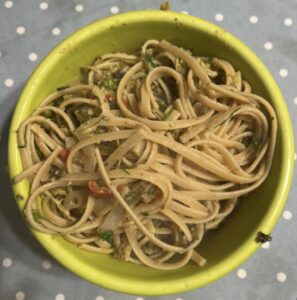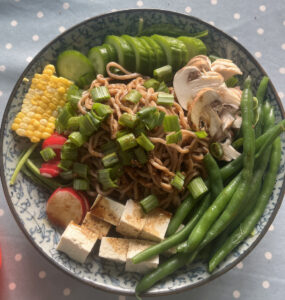What you see in the somewhat dark picture, is a post-Shavuot dinnertime snack: tomatoes with basil, various types of goat cheese from the desert, and a really cool cabbage salad.
We spent our Shavuot vacation camping in the Negev, Israel’s southern desert area, and were very surprised and heartened to meet knowledgeable and idealistic people who use ecology and organic farming to make the desert a wonderful area for activism. Shavuot is a holiday of harvest and bounty, and a good opportunity to support small farms. In the last few years, several of these small farms have opened in the vicinity of Mitzpe Ramon, a town right next to the breathtaking Ramon Anticline, an amazing place to see Mother Nature at work. I suppose it is this beauty and magnitute of natural forces that inspired good people to come along and start small farms, growing all sorts of interesting vegetables which benefit from the desert climate, as well as raising goats and making excellent goat cheese.
We got to visit Naot Farm, where we talked to the farmworkers about the realities of raising goats in the desert and of making sheep. Apparently, the desert climate is rough, but not impossible, to work with, and the goats enjoy fresh pasture and desert plants. Eating the cheese, one can almost taste the different plants the goats have eaten.
Here’s a simple baking recipe I intend to use with the lovely cheeses we bought; it can be easily done with a twelve-hole muffin pan.
Shavuot Cheese Suffles
3 cups whole wheat or whole rice flour
1 1/2 cup milk, buttermilk or goat yogurt
3 eggs, beaten
1 tbsp olive oil (plus oil or spray for oiling the pan)
a rosemary twig
12 cubes of good quality goat cheese
Heat oven to around 200 degrees celsius. Sift flour into large bowl; slowly add milk and eggs and mix until uniform. Add oil and chop in rosemary. Carefully pour mix into muffin holes, filling them up to about 3/4 of their height; then, drop a cube of cheese into the center of every hole. Bake for 45 minutes, or until mixture has finished rising and is golden and fluffy. Delicious for breakfast.
Elsewhere, we were served a simple and nice cabbage salad, involving chopped cabbage, vinegar, oil, and lots of fresh dill. Which we then reconstructed at home with our Chubeza cabbage. By the way, we happened to read, in one of the places we visited, that the common association of cabbage with gas stems not so much from the cabbage itself, but from its interaction with common pesticides; organic cabbages are generally thought to be gas-free.





No comment yet, add your voice below!